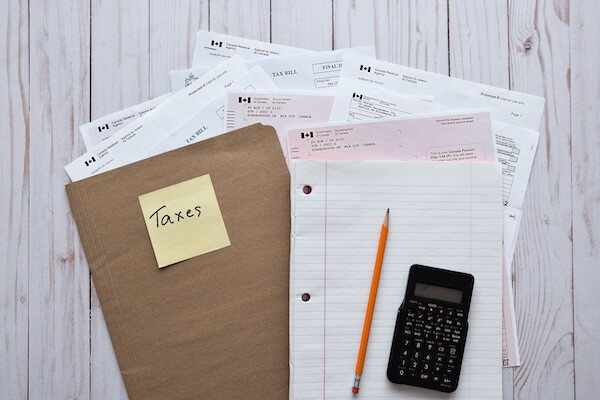There’s no doubt that every tax-paying individual and business would love to reduce their tax burden each year.
And with the right tax deduction strategies in place, that is entirely possible.
Here are six strategies that you can implement before the end of 2022.
Prepay Expenses Using the IRS Safe Harbor
IRS regulations contain a safe-harbor rule that allows cash-basis taxpayers to prepay and deduct qualifying expenses up to 12 months in advance without challenge, adjustment, or change by the IRS.
Under this safe harbor, your 2022 prepayments cannot go into 2023 because you can prepay only 12 months of qualifying expenses.
For a cash-basis taxpayer, qualifying expenses include lease payments on business vehicles, rent payments on offices and machinery, and business and malpractice insurance premiums.

Example: you pay $3,000 a month in rent and would like a $36,000 deduction this year. So, on Friday, December 30, 2022, you mail a rent check for $36,000 to cover all your 2023 rent. Your landlord does not receive the payment in the mail until Tuesday, January 3, 2023.
Here are the results:
- You deduct $36,000 in 2022 (the year you paid the money).
- The landlord reports taxable income of $36,000 in 2023 (the year he received the money).
You get what you want—the deduction this year.
The landlord gets what he wants—next year’s entire rent in advance, eliminating any collection problems while keeping the rent taxable in the year he expects it to be taxable.
Stop Billing Customers, Clients, and Patients
Here is one rock-solid, straightforward strategy to reduce your taxable income for this year: stop billing your customers, clients, and patients until after December 31, 2022. (We assume here that you or your corporation is on a cash basis and operates on the calendar year.)

Customers, clients, and insurance companies generally don’t pay until billed. Not billing customers and clients is a time-tested tax-planning strategy that business owners have used successfully for years.
Example. Jake, a dentist, usually bills his patients and the insurance companies at the end of each week. This year, however, he sends no bills in December. Instead, he gathers up those bills and mails them the first week of January. Presto! He postponed paying taxes on his December 2022 income by moving that income to 2023.
Buy Office Equipment
With bonus depreciation now at 100 percent along with increased limits for Section 179 expensing, buy your equipment or machinery and place it in service before December 31, and get a deduction for 100 percent of the cost in 2022.

Qualifying bonus depreciation and Section 179 purchases include new and used personal property such as machinery, equipment, computers, desks, chairs, and other furniture (and certain qualifying vehicles).
Use Your Credit Cards
If you are a single-member LLC or sole proprietor filing Schedule C for your business, the day you charge a purchase to your business or personal credit card is the day you deduct the expense. Therefore, as a Schedule C taxpayer, you should consider using your credit card for last-minute purchases of office supplies and other business necessities.

If you operate your business as a corporation, and if the corporation has a credit card in the corporate name, the same rule applies: the date of charge is the date of deduction for the corporation.
But suppose you operate your business as a corporation and are the personal owner of the credit card. In that case, the corporation must reimburse you if you want the corporation to realize the tax deduction, which happens on the reimbursement date. Thus, submit your expense report and have your corporation make its reimbursements to you before midnight on December 31.
Don’t Assume You Are Taking Too Many Deductions
If your business deductions exceed your business income, you have a tax loss for the year. With a few modifications to the loss, tax law calls this a “net operating loss,” or NOL.
If you are starting your business, you could very possibly have an NOL. You could have a loss year even with an ongoing, successful business.
You used to be able to carry back your NOL two years and get immediate tax refunds from prior years, but the Tax Cuts and Jobs Act (TCJA) eliminated this provision. Now, you can only carry your NOL forward, and it can only offset up to 80 percent of your taxable income in any one future year.
What does this all mean?
Never stop documenting your deductions, and always claim all your rightful deductions.
Deal with Your Qualified Improvement Property (QIP)
In the CARES Act, Congress finally fixed the qualified improvement property (QIP) error that it made when enacting the TCJA.
QIP is any improvement made by you to the interior portion of a building you own that is non-residential real property (think office buildings, retail stores, and shopping centers)—if you place the improvement in service after the date you place the building in service.
The big deal: QIP is not real property that you depreciate over 39 years. QIP is 15-year property, eligible for immediate deduction using either 100 percent bonus depreciation or Section 179 expensing. To get the QIP deduction in 2022, you must place the QIP in service on or before December 31, 2022.
Planning note: if you have QIP property on an already filed 2019 return that you did not amend, it’s on that return as 39-year property. You need to fix that—and likely add some cash to your bank account because of the fix.
Would you like help creating similar tax strategies for your business? Let us know in the comments below.




